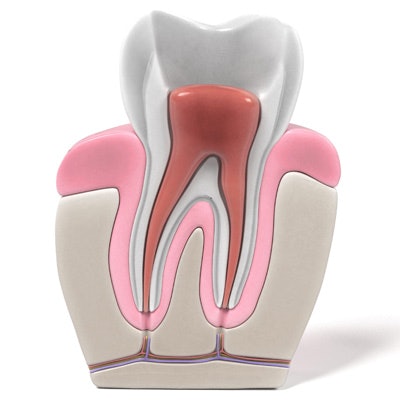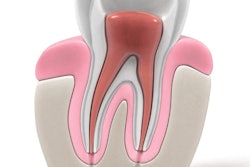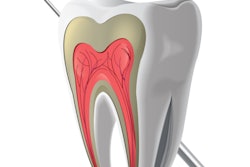
With endodontic files, reciprocating mechanisms are claimed to improve cyclic resistance and fatigue by reversing the rotation direction for short periods of time. It is also claimed that this helps avoid torsional failure. Researchers wanted to see if these claims held up for two nickel-titanium files.
They compared the safety limits and torsional resistances of two files, the WaveOne Gold and the WaveOne (both Dentsply Sirona Endodontics) while using the original motor. Researchers reported that the WaveOne Gold had a safe rotational angle for cutting movements, but they cautioned that practitioners should not reuse these instruments for performance and safety reasons.
"The [WaveOne Gold] reciprocating file was found to have a safe rotational angle for the cutting movement when used in a motor dedicated to [WaveOne]," wrote the study authors, led by Jung-Hong Ha, DDS, PhD, of the department of conservative dentistry at the Kyungpook National University School of Dentistry in Daegu, South Korea (Materials, July 6, 2018).
Load and fracture resistance
Nickel-titanium rotary instruments offer high flexibility, enhanced cutting proficiency, and the ability to preserve a canal's anatomy compared with stainless steel files. However, instrument fracture is an ongoing concern. These fractures are categorized as the result of either cyclic flexural fatigue or torsional failure.
Reciprocal movement, a periodical reversal of the rotational direction, is an attempt to reduce torsional stress. At present, two such instrument systems follow this reciprocation concept: Reciproc (VDW) and WaveOne. This study exclusively focused on the WaveOne and the WaveOne Gold.
The researchers sought to test safety limits for these instruments by measuring the torsional limit before plastic deformation after repetitive loading.
Using a custom-designed device, they applied repetitive torsional load by programming the specific rotational movements and resulting output variables into the control system. Sample size was 15 per group. The researchers then examined the test specimens for fractures using a scanning electron microscope.
The researchers ran three tests on the instruments:
- A repetitive continuous torsional test in which repetitive torsional loads from reciprocating movements (counterclockwise/clockwise) were applied at 2 rotations per minute (rpm) with gradually increasing rotational angles
- A repetitive and single continuous torsional test in which another 15 files were rotated in a single continuous movement until failure using counterclockwise (active cutting direction) rotation at a constant 2 rpm
- A single continuous rotation test to 150° and returning to original position at a constant 2 rpm
Test results showed no significant difference between the two files (see table below).
| Comparison of torsional load between files after testing | ||
| Torsional load (Ncm) | WaveOne | WaveOne Gold |
| Continuous | 1.49 ± 0.25 | 1.39 ± 0.24 |
| Repetitive | 1.13 ± 0.11 | 1.20 ± 0.12 |
The researchers then conducted a scanning electron microscope evaluation. The lateral aspect of most tested file groups showed numerous longitudinal microcracks, suspected to be a dislocation, running along the long axis of the file shaft, and this was more prominent for the WaveOne group than the WaveOne Gold group, they reported.
In addition, after repetitive loading movements, the WaveOne Gold did not show any topographic change under scanning electron microscope.
"Comparing the two systems under [scanning electron microscope], [WaveOne] showed a catastrophic change in comparison with [WaveOne Gold], the authors concluded.
They noted that localized permanent deformation or distortion may result in reduced clinical efficiency for root canal preparation and debris retrieval, as well as an increased risk of instrument breakage.
Single-use focus
In terms of study limitations, the researchers acknowledged that instruments with small cross-sectional areas may have lower torsional resistance than larger ones. In this study, the instrument's tip was secured at the 3-mm level, which might mean the distortion angle and torsional load might be lower and closer to the file tip.
The authors emphasized that practitioners needed to focus on only using a file for a single patient.
"Clinicians need to consider that decreased [torsional limit] of a root canal instrument by repetitive torsional loading and/or reuse could result in a higher chance of permanent deformation or distortion when files bind within a root canal,” they wrote.



















